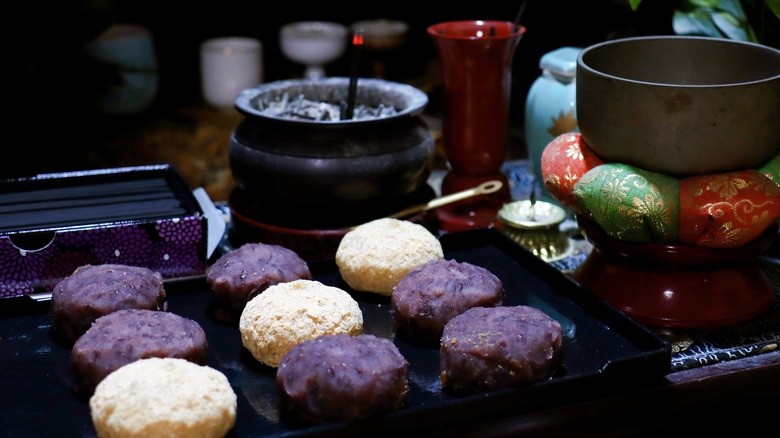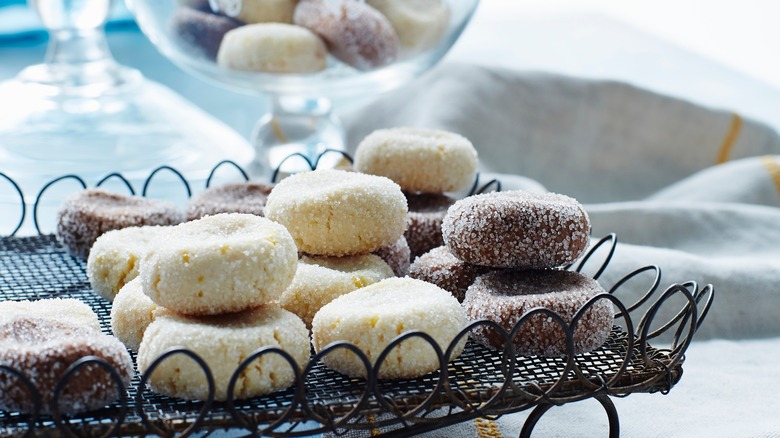Beans Of The Dead: The Italian Halloween Classic That Belies Its Name
If you don't like the sound of a bean cookie, you're not alone. But then, you've probably never tried Italian "fave dei morti," which can be translated to "fava beans of the dead" (per Atlas Obscura). These cookies are made to resemble fava beans but are much bigger and sweeter, typically eaten on November 1 and 2 (per Food 52).
The first two days in November are holidays in the Roman Catholic Church, known as All Saints and All Souls Days respectively (Ognissanti and Tutti i Morti in Italian); the two days feature important commemorations of the deceased. All Saints Day celebrates those who have died in a holy state, while All Souls Day honors all of our beloved deceased (via "A Continual Feast").
In Antiquity, beans were strongly associated with the dead throughout the Mediterranean (via Agrodolce), and in Ancient Rome, fava beans especially were seen as representing dead souls, and so they were frequently offered as gifts to Hades, God of the Underworld. Since maintaining a relationship with their ancestors and receiving the Gods' blessing were vitally important to Romans, many bean rituals developed, including chewing them, offering them on tombs, and cooking them.
As Roman customs were eclipsed by Christian practices, the rituals were transformed, but not eliminated. Christianity discouraged leaving food to feed the dead on graves, and so the beans went from offerings to Gods and ancestors to symbolic sweets shared with the living, designed to look (per Food 52).
Cookies that look like beans
The tradition evolved in a very satisfying direction for us living mortals — cookies designed to look like both bones and beans became common throughout the peninsula (via "A Continual Feast"). Fave dei morti cookies in particular are common throughout Italy; while they probably originated in the region of Umbria, they have made their way from the center of the peninsula all the way up to Trieste in the North (per Agrodolce). Recipes vary, but they always start with almonds and sugar. Nuts were seen as resembling bones, so almonds are a natural starting point (via "A Continual Feast"); additional ingredients and flavoring agents are then added — from lemon to cinnamon to anise and even rum (via Food 52) — plus butter and all that other good stuff that makes the cookies rich and crumbly.
The shapes vary considerably as well, and making them look like beans doesn't seem to be a high priority: Trieste's confections are some of the most famous, and they bear a vague resemblance to fava beans but are made in soft hues that are definitely not bean green: light mocha-colored, plain white, and pastel pink. Other recipes include an indentation in the middle, which is sometimes filled with an almond (per Food 52).

